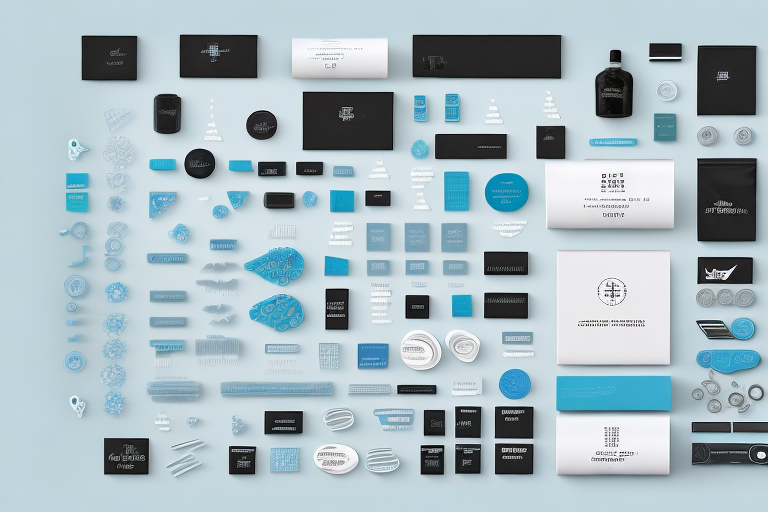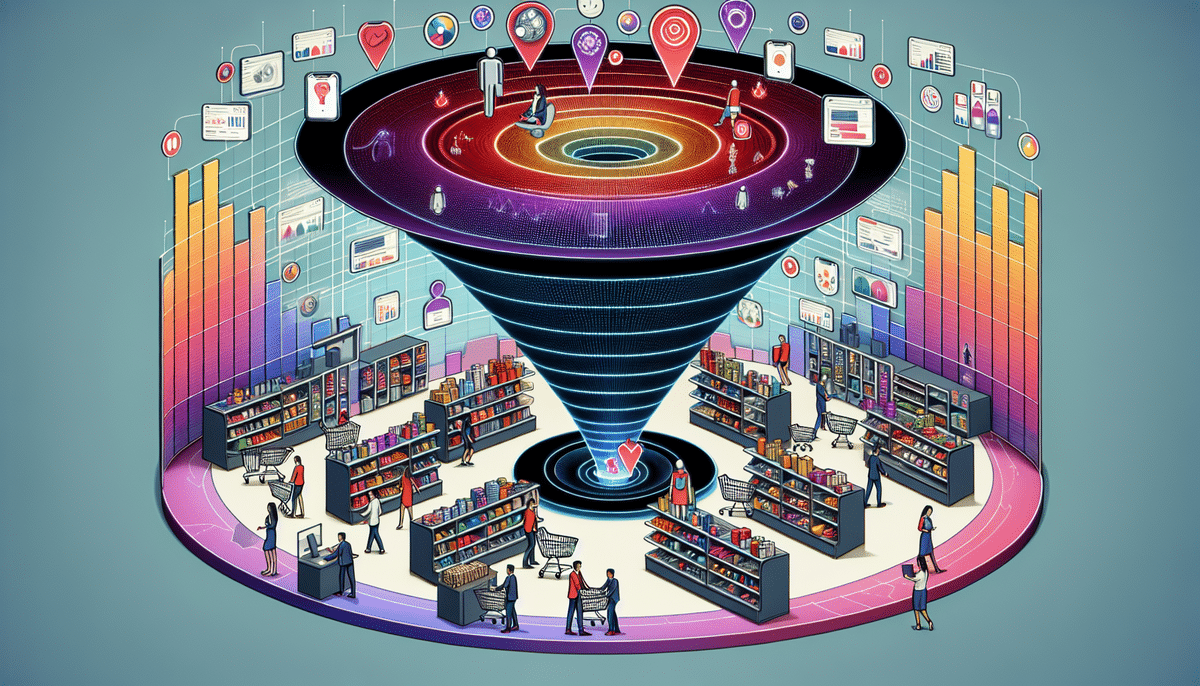The Benefits of Offering Product Bundles and Kits
Product bundling and kit creation can provide numerous benefits to businesses, such as:
- Increased Sales: Bundles and kits facilitate upselling and cross-selling, leading to higher sales. Customers are more likely to purchase multiple items in a single transaction when attractive bundled deals are available.
- Enhanced Customer Experience: Bundles allow customers to address multiple needs or preferences with one purchase, resulting in a more satisfying shopping experience. This convenience and perceived value can foster greater loyalty and repeat purchases.
- Reduced Costs: Bundling products can lower packaging, shipping, and handling costs. Selling multiple products together is often more cost-effective than selling them individually.
Additionally, offering product bundles and kits helps businesses clear out inventory by combining slow-moving products with popular ones. This strategy frees up warehouse space and reduces the need for clearance sales, which can adversely affect profit margins. Bundling also creates a sense of urgency among customers, encouraging quicker purchase decisions.
Choosing the Right Products for Your Bundles and Kits
Selecting the appropriate products for your bundles and kits is crucial for their success. Follow these guidelines to ensure effective bundling:
- Identify Customer Needs: Conduct market research to understand your target audience's needs and preferences. Determine which products can be combined to address specific customer requirements.
- Choose Complementary Products: Select products that complement each other in function, style, or theme. Avoid bundling products that compete with each other or don't make sense together.
- Create Bundles Based on Behavior: Analyze customer buying behavior to group products that are frequently purchased together or are similar in price range. This approach ensures that bundles are optimized for sales.
Consider the cost of the bundle to ensure it provides value to the customer while remaining profitable. Additionally, focus on the packaging and presentation of the bundle to enhance the overall customer experience.
Understanding Your Target Audience’s Needs and Preferences
A deep understanding of your target audience is essential for creating and marketing product bundles effectively. Key areas to consider include:
- Demographics: Analyze factors such as age, gender, location, and income level to tailor bundles that resonate with different segments of your audience.
- Psychographics: Examine customer lifestyles, hobbies, and interests to create bundles that align with their preferences.
- Pricing Sensitivity: Assess how sensitive your customers are to pricing and adjust your pricing strategies to match their willingness to pay for bundled deals.
Additionally, analyze purchasing behavior and seasonality to predict demand and tailor bundles that meet the evolving needs of your customers. Tools like Google Analytics and customer surveys can provide valuable insights into customer preferences and trends.
Pricing Your Bundles and Kits for Maximum Profitability
Setting the right price for your bundles is critical for maximizing profitability. Consider the following pricing strategies:
- Cost-Plus Method: Calculate the total cost of the bundle and add a markup percentage to determine the selling price. Ensure that the bundle is priced attractively compared to purchasing each product separately.
- Anchor Pricing: Use a high-priced product as an anchor and add lower-priced products to create a bundle. The perceived value of the anchor product makes the overall bundle more attractive to customers.
- Variable Pricing: Offer different pricing tiers for bundles to cater to various customer segments based on their budget and willingness to pay.
Incorporate data and analytics to continuously evaluate the effectiveness of your pricing strategies. Tools like Shopify's guide on product bundling can offer additional insights into effective pricing methods.
Creating Compelling Product Descriptions for Your Bundles and Kits
Effective product descriptions are key to marketing your bundles successfully. Follow these tips to craft compelling descriptions:
- Highlight Benefits: Focus on the value and benefits of the bundled products rather than just their features. Explain why the bundle is a better option than purchasing each product separately.
- Use High-Quality Images: Incorporate clear and attractive images of the bundled products to provide a visual representation of the bundle and its components.
- Add Customer Reviews: Include reviews and ratings from customers to build trust and validate the value of the bundle.
Enhancing product descriptions with actionable language and clear calls-to-action (CTAs) can further encourage purchase decisions.
Promoting Your Bundles and Kits Effectively
Effective promotion strategies can significantly boost the visibility and sales of your bundles and kits. Implement the following techniques:
- Feature Bundles on the Homepage: Highlight your best bundles prominently on your website's homepage to capture customer attention immediately.
- Create Targeted Email Campaigns: Use email marketing to promote bundles to existing customers and subscribers based on their purchase history and preferences.
- Offer Limited-Time Deals: Create urgency by offering time-limited bundled deals, encouraging customers to make quick purchase decisions.
Utilize social media platforms and influencer partnerships to expand the reach of your promotional campaigns. Additionally, consider using HubSpot's email marketing tools for more effective campaigns.
Managing Inventory Levels for Your Bundles and Kits
Effective inventory management ensures that your bundles and kits are always available for purchase. Here are some strategies to manage inventory levels:
- Develop a Fulfillment Strategy: Align your fulfillment process with the bundling of products, especially if they have different fulfillment times. Ensure timely delivery to maintain customer satisfaction.
- Track Inventory Levels: Use inventory management software to monitor the stock levels of individual products and bundled kits. Tools like Inventory Management can help in this regard.
- Forecast Demand: Analyze sales data and trends to predict future demand for your bundles and kits. Accurate forecasting allows for better planning of inventory levels.
Implementing automated inventory tracking systems can reduce the risk of stockouts and overstocking, ensuring optimal inventory levels at all times.
Tracking Sales Performance of Your Bundles and Kits
Monitoring the sales performance of your bundles and kits is essential for assessing their effectiveness and making necessary adjustments. Follow these steps to track performance:
- Measure Sales Volume: Track the number of bundles sold to identify which bundles are performing well and contributing to overall sales.
- Analyze Conversion Rates: Evaluate the conversion rates of each bundle to determine their popularity and effectiveness in driving sales.
- Monitor Profit Margins: Calculate the profit margins for each bundle to ensure they are contributing positively to your bottom line.
Utilize analytics tools like Google Analytics to gain deeper insights into your bundles' performance and make data-driven decisions for future bundling strategies.
Measuring the ROI of Your Bundles and Kits
Assessing the return on investment (ROI) of your bundles and kits helps determine their profitability and effectiveness. Here's how to measure ROI:
- Track Expenses: Monitor all costs associated with creating and marketing bundles, including packaging, promotional materials, and inventory management.
- Calculate Revenue: Determine the total revenue generated from bundle sales, including upsells, cross-sells, and repeat purchases.
- Calculate ROI: Use the formula (Revenue – Expenses) / Expenses * 100 to calculate the ROI. This analysis helps identify the most profitable bundles and informs future bundling decisions.
Leveraging financial analysis tools can enhance the accuracy of your ROI calculations and provide more comprehensive insights.
Common Mistakes to Avoid When Creating Product Bundles and Kits
Avoid these common mistakes to ensure the success of your product bundles and kits:
- Too Many Options: Offering too many bundle options can overwhelm customers and complicate their decision-making process. Keep bundle offerings simple and focused.
- Absence of Value: Ensure that your bundles provide real value to customers. Bundling products without offering savings or added convenience can lead to customer frustration.
- Poor Product Selection: Carefully choose products that complement each other and add value to the bundle. Avoid bundling low-demand or unrelated products.
Regularly reviewing customer feedback and sales data can help identify and rectify these common mistakes.
Optimizing Your Product Bundles and Kits Based on Customer Feedback
Customer feedback is invaluable for refining your product bundles and kits. Use the following methods to optimize based on feedback:
- Survey Customers: Conduct surveys to gather data on customer satisfaction with your bundles, pricing, and overall value. Use this information to make informed improvements.
- Listen to Customer Complaints: Address any complaints or concerns related to your bundles promptly. Use feedback to adjust inventory levels, pricing, or product selections as needed.
- Include Feedback Forms or Review Options: Provide easy ways for customers to share their thoughts and opinions on your bundles. Analyze this feedback to enhance the customer experience and optimize bundles.
Implementing feedback loop systems can ensure continuous improvement and alignment with customer preferences.
The Future of Product Bundling: Emerging Trends
Product bundling is evolving with emerging trends that businesses should watch:
- Subscription Bundling: Companies are increasingly bundling products and services into subscription models, targeting convenience and generating recurring revenue streams.
- Customization: Offering customizable bundles allows customers to select their preferred products, creating personalized packages tailored to individual needs.
- Personalized Recommendations: Leveraging AI and machine learning, businesses can create personalized bundles based on individual customer data, enhancing relevance and appeal.
Staying abreast of these trends and integrating them into your bundling strategies can provide a competitive edge and meet the evolving expectations of customers.
Case Studies: Successful Companies with Profitable Product Bundles
Examining successful companies provides valuable insights into effective bundling strategies:
- Apple: Apple successfully bundles its products by offering discounted rates for purchasing iPhones along with complimentary services like Apple Music, Apple TV+, and Apple Arcade. This strategy enhances the value proposition and encourages customers to stay within the Apple ecosystem.
- Amazon: Amazon leads in product bundling through offerings like book and ebook bundles, Amazon Prime, and various subscription services for entertainment and everyday essentials such as Amazon Fresh.
- Dollar Shave Club: Dollar Shave Club, a grooming subscription service, bundles products like razors, shave butter, after-shave cream, and other grooming items into single packages, increasing convenience and customer retention.
Studying these examples can inspire innovative bundling strategies tailored to your business model.
Conclusion
Creating and managing product bundles and kits can be transformative for businesses. By strategically selecting products, implementing effective pricing and marketing strategies, and managing inventory efficiently, businesses can boost sales, enhance customer experiences, and reduce operational costs. Continuously measuring and optimizing your bundles ensures sustained profitability and alignment with customer needs. Leveraging insights from successful companies and staying attuned to emerging trends can further elevate your bundling strategies. Embrace product bundling as a powerful tool to unlock significant value and drive business growth.




















